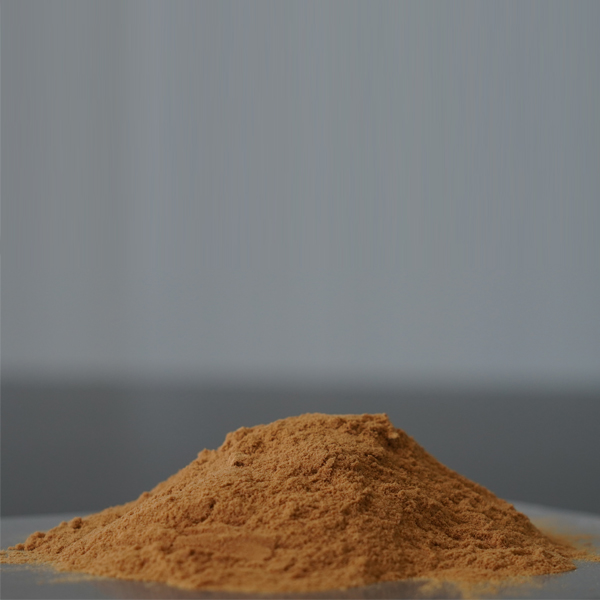
News
Oct . 21, 2024 19:15 Back to list
High-Quality Polyglutamic Acid Classification and Its Benefits for Various Applications
The High Quality Typology of Polyglutamic Acid Trends and Applications
Polyglutamic acid (PGA) has emerged as a star in the realm of biopolymers and biomaterials, captivating researchers and industries alike with its unique properties and numerous applications. This article delves into the high-quality typology of polyglutamic acid, focusing on its synthesis, characteristics, and the diverse applications that illustrate its significance in various fields.
Understanding Polyglutamic Acid
Polyglutamic acid is a naturally occurring biopolymer derived from the amino acid glutamic acid. It is a linear polypeptide characterized by its high degree of water solubility and biocompatibility. The polymer consists of multiple glutamic acid monomers linked through peptide bonds, which endows it with distinctive physical and chemical properties. The structure of PGA allows for a high degree of flexibility and functionality, making it an ideal candidate for an array of applications.
High-Quality Synthesis of Polyglutamic Acid
The synthesis of polyglutamic acid can be achieved through several methods, including microbial fermentation, chemical synthesis, and enzymatic processes. Among these, microbial fermentation stands out as a sustainable and eco-friendly approach, producing high yields of polyglutamic acid with minimal environmental impact. Various strains of bacteria, such as *Bacillus subtilis*, have been extensively studied for their ability to synthesize PGA. Optimizing fermentation conditions—such as pH, temperature, and nutrient availability—can significantly enhance the quality and yield of the polymer.
High-quality PGA can be characterized by its molecular weight, purity, and degree of substitution
. Techniques such as gel permeation chromatography (GPC) and nuclear magnetic resonance (NMR) spectroscopy are employed to assess these parameters, ensuring that the polyglutamic acid produced meets the specificity required for its intended applications.Characteristics of High-Quality Polyglutamic Acid
One of the outstanding features of high-quality polyglutamic acid is its ability to retain water. This property makes PGA a powerful humectant, capturing moisture and providing hydration to various products. Furthermore, its biocompatibility and biodegradability greatly enhance its appeal, particularly in the cosmetic, pharmaceutical, and agricultural industries.
high quality typology polyglutamic acid

Additionally, PGA’s ability to form gels and films opens up a range of possibilities for its utilization. Depending on the processing conditions, polyglutamic acid can create stable and elastic gels suitable for use in wound dressings, food items, and other applications where moisture retention is critical. Its emulsifying properties also make it a valuable ingredient in cosmetic formulations, promoting skin hydration and texture.
Applications of Polyglutamic Acid
The diverse applications of high-quality polyglutamic acid span multiple industries, demonstrating its versatility and efficacy
1. Cosmetics and Skincare In the beauty industry, PGA has gained traction as a potent moisturizing agent. Its ability to hold moisture and form a barrier on the skin makes it an excellent ingredient in lotions, serums, and masks. The polymer's gentle nature ensures that it is suitable for various skin types, including sensitive skin, enhancing its desirability in skincare formulations.
2. Pharmaceuticals The biocompatible nature of polyglutamic acid has led to its exploration in drug delivery systems. PGA can encapsulate active pharmaceutical ingredients, improving their solubility and bioavailability. Controlled release formulations utilizing PGA ensure a steady release of medication, enhancing therapeutic effectiveness.
3. Agriculture In agricultural practices, PGA serves as a soil conditioner, promoting water retention and improving soil structure. Its use can lead to enhanced crop yields, making it an asset in sustainable farming practices. Moreover, its biodegradable nature reduces environmental impact, aligning with the growing trend towards eco-friendly agriculture.
4. Food Industry In the food sector, PGA acts as a thickening agent and stabilizer, improving texture and shelf-life of products. Its natural origin appeals to health-conscious consumers seeking clean-label products.
Conclusion
The high-quality typology of polyglutamic acid exemplifies the intersection of innovation and sustainability in modern material science. As research continues to unveil new applications and improve synthesis methods, PGA is poised to play a crucial role in various industries. Its unique properties and broad compatibility with diverse formulations highlight its potential as a multifunctional ingredient. With an increasing focus on biocompatibility and environmental sustainability, polyglutamic acid stands at the forefront of biopolymer development, promising exciting advancements for the future.
-
Polyaspartic Acid Salts in Agricultural Fertilizers: A Sustainable Solution
NewsJul.21,2025
-
OEM Chelating Agent Preservative Supplier & Manufacturer High-Quality Customized Solutions
NewsJul.08,2025
-
OEM Potassium Chelating Agent Manufacturer - Custom Potassium Oxalate & Citrate Solutions
NewsJul.08,2025
-
OEM Pentasodium DTPA Chelating Agent Supplier & Manufacturer High Purity & Cost-Effective Solutions
NewsJul.08,2025
-
High-Efficiency Chelated Trace Elements Fertilizer Bulk Supplier & Manufacturer Quotes
NewsJul.07,2025
-
High Quality K Formation for a Chelating Agent – Reliable Manufacturer & Supplier
NewsJul.07,2025
